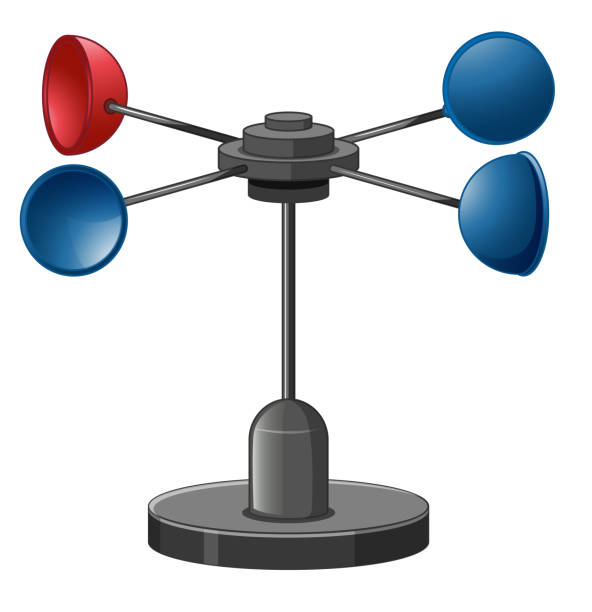All You Need to Learn About Anemometers: How They Function, Why They Matter, and Where to Make use of Them
Anemometers, though frequently overlooked in the realm of clinical instruments, play an essential duty in various areas, offering useful understandings right into wind speed and air flow patterns. Understanding the auto mechanics behind these devices is necessary for anybody looking for to harness the power of this data. From meteorologists tracking weather condition patterns to designers designing frameworks with wind lots in mind, the applications of anemometers are diverse and significant. As we explore the details of anemometer technology, we will discover the internal operations of these devices, their importance, and the crucial factors to consider when selecting the best anemometer for certain applications.

Anemometer Fundamentals
An essential tool used to gauge wind speed and direction, the anemometer plays a critical duty in weather forecasting and different industries. An anemometer generally contains three or 4 mugs that revolve in the wind, a vane that aims into the wind, and sensors to track the motions or turnings. By computing the turnings or activities over a details amount of time, the anemometer can establish wind speed. The vane helps figure out wind direction by aiming right into the wind, supplying useful data for climate forecasting, air travel, maritime operations, ecological monitoring, and wind energy applications.
There are different types of anemometers readily available, consisting of cup anemometers, vane anemometers, hot-wire anemometers, and sonic anemometers, each with its special attributes and applications. Mug anemometers are frequently utilized for standard wind rate measurements, while vane anemometers are liked for directional dimensions. Hot-wire anemometers are appropriate for low airspeeds, and sonic anemometers are ideal for high-precision measurements in research and commercial setups. Recognizing the basics of anemometers is vital for accurate wind information collection and analysis across different fields.
Principles of Anemometer Operation
Structure on the foundational understanding of anemometer essentials, the principles of anemometer operation clarify the auto mechanics behind wind speed and direction dimensions. Anemometers run on the concept of air movement affecting a sensor, triggering it to revolve. Mug anemometers, for instance, have three or even more cups that capture the wind, creating them to rotate much faster as the wind speed rises. The rotation speed is after that exchanged a wind speed dimension. Vane anemometers, on the other hand, use a tail or a probe that straightens itself with the wind instructions, supplying a dimension of wind instructions based upon the alignment of the sensor. Hot-wire anemometers rely upon a heated cord that cools off as wind overlooks it, with the price of cooling down figuring out the wind speed. Ultrasonic anemometers measure wind rate and direction by examining the moment it takes for ultrasonic signals to take a trip in between transducers. Understanding these principles is vital for dependable and precise wind dimensions in different applications.
Value of Anemometers
The relevance of anemometers in meteorology and numerous sectors can not be overemphasized. Anemometers play an essential function in measuring wind rate and instructions, offering crucial data for climate projecting, climate research studies, environmental tracking, and aeronautics operations. Meteorologists depend on anemometers to collect exact wind data, assisting them understand weather condition patterns, forecast storms, and issue timely cautions to the general public. In industries such as construction, agriculture, renewable resource, and maritime procedures, anemometers are used to optimize procedures, make certain safety, and raise efficiency. As an example, wind ranch operators use anemometers to examine wind conditions and take full advantage of electrical energy manufacturing from wind generators. In the maritime sector, anemometers help ship navigation by giving real-time wind info to captains, helping them make informed decisions to make sure safe trips. Generally, anemometers are crucial devices that add substantially to security, performance, and educated decision-making in meteorology and a variety of industries.
Applications Across Numerous Industries
In the eco-friendly power market, anemometers play a critical duty in analyzing wind problems for wind farm placements, guaranteeing optimal energy manufacturing. Industries like building and construction and mining make use of anemometers to check wind rates, vital for security procedures, particularly when working at elevations or in open-pit mines where solid winds can position risks. In farming, anemometers help farmers in handling plant splashing by supplying real-time information on wind speed to avoid drift.

Selecting the Right Anemometer for Your Demands
For basic objectives, a mug anemometer is appropriate for determining wind speed, while a vane anemometer provides wind instructions information. Hot-wire anemometers are suitable for reduced airspeed measurements, and ultrasonic anemometers offer high accuracy and longevity.

Conclusion
In conclusion, anemometers play a vital role in determining wind rate and instructions across different industries. It is essential to take into consideration the significance of anemometers in order to make educated decisions when picking the most ideal device for determining wind problems.
There are numerous kinds imp source of anemometers available, including cup anemometers, vane anemometers, hot-wire anemometers, and sonic anemometers, each with its special attributes and applications. Mug anemometers are typically utilized for standard wind rate dimensions, while vane anemometers are preferred for directional measurements. additional reading Hot-wire anemometers are suitable for low airspeeds, and sonic anemometers are optimal for high-precision dimensions in study and commercial setups.Structure on the fundamental understanding of anemometer basics, the principles of anemometer operation illuminate the auto mechanics behind wind speed and instructions measurements. For general purposes, a cup anemometer is suitable for measuring wind speed, while a vane anemometer offers wind direction data.
Comments on “Top Features to Search For in an Efficient Anemometer for Accurate Wind Dimension”